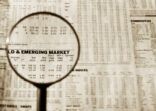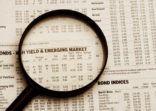Despite slowing growth and rising recession risk, investors should look beyond usual patterns of downgrades and defaults, to allocate instead to the HY corporate bond sector.
AB believes there are three key reasons for this: solid long-term fundamentals, extended maturity runways and high valuations.
“That’s why, in our view, income-seeking investors should seize the opportunity to add high yield bonds to their portfolios today,” said Will Smith, director, US HY at AB.
This is worth considering regardless of any concerns that yields are still rising.
“Sitting on the sidelines can be a costly mistake,” added Smith. “High yield is among the most resilient asset classes and tends to rebound quickly after downturns, thanks to its consistent, high income.”
On average, since 2000, HY rebounded from peak-to-trough losses exceeding 5% in just five months. Then, over the 12 months following such losses, the global HY market returned 26% on average.
Focusing on fundamentals
Historically, corporations have struggled to secure cheap and adequate funding amid tighter credit conditions and slower demand – especially businesses already overstretched.
Yet with today’s environment, rather than companies being in weak positions, HY bond issuers are in better shape financially than issuers entering past recessions.
They partly have Covid-19 to thank. “This uncertainty led companies to manage their balance sheets and liquidity conservatively over the past two years, even as profitability recovered,” explained Smith.
As a result, leverage and coverage ratios, margins and free cash flow have improved, he added. “This relative strength in balance sheets means corporate issuers can withstand more pressure as growth and demand slow.”
Another reason the corporate universe is well-positioned is due to the pandemic essentially “cleaning up” the sector, with defaults having peaked at 6.3% in October 2020.
These defaults, as well as downgrades, strengthened the quality of the HY market. “At the same time that many of the lowest-rated high yield bonds defaulted and fell out of indices, many of the lowest-rated investment-grade bonds fell into the high yield market as fallen angels,” said Gershon Distenfeld, co-head of fixed income and director, credit at AB.
The firm sees the quality of the HY market being at its highest in more than a decade. For example, BB-rated bonds comprise 52%, compared with an average of 46% over the past 10 years.
Extended maturity runways
AB has also observed companies focusing on extending their maturity runways since the start of the pandemic.
“That means there’s no approaching maturity wall, where a large share of bond issues matures and issuers are compelled to procure new debt at prevailing rates,” explained Smith.
Only 20% of the market will mature by the end of 2025, forecasts the firm, with the lion’s share of maturities coming between 2026 and 2029.
In short, this means companies will enjoy low coupons for many years to come.
“Even if we assume that yields continue to rise and remain high for the next four years, coupon rates won’t return to pre-Covid levels north of 6% until January 2026,” added Smith.
High yield that’s high
Investors should also be encouraged by HY valuations being far more compelling today than a few months ago, with yields and spreads at multi-year highs.
“Either the market is dramatically overestimating default risk, or – rather than being overly concerned about defaults – it’s demanding an elevated premium for elevated volatility. We think the latter is most likely because we expect continued elevated volatility too,” said Distenfeld, adding that this will keep spreads wide.
Further, history shows that the US HY sector’s yield to worst has been an excellent proxy for its return over the following five years, with US HY bonds performing predictably even in rough markets.
“High yield bonds supply a consistent income stream that few other assets can match,” said Smith. “And when high yield issuers call their bonds before they mature, they pay bondholders a premium for the privilege. This helps compensate investors for losses suffered when some bonds default.”
As a result, although HY may experience some near-term volatility, investors with a longer-term lens can ride out short-term drawdowns.

















